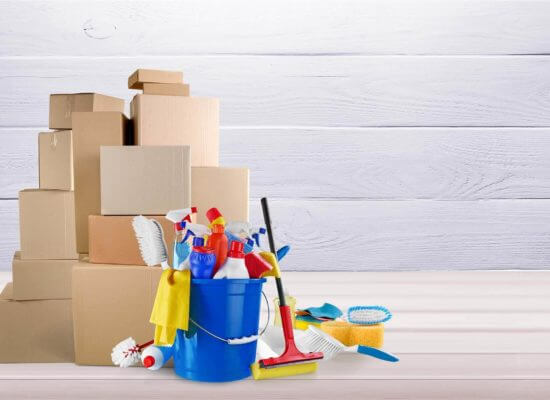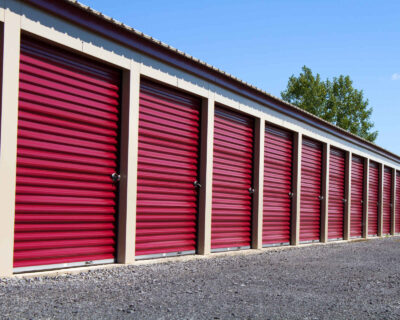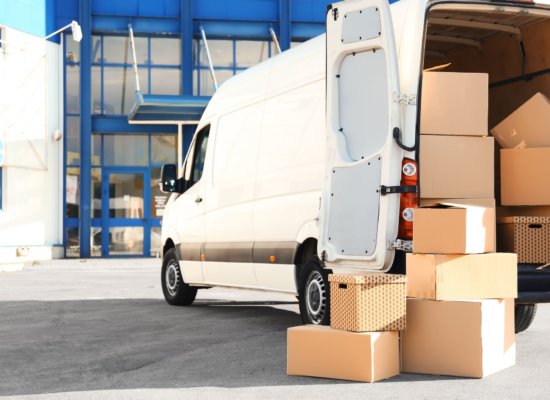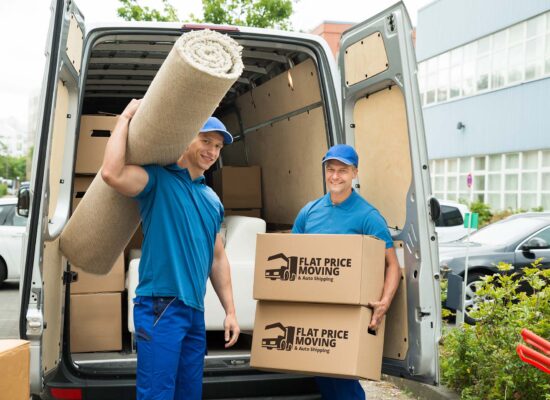How to Pack a Sofa for Moving: A Step-by-Step Guide to Your Comfortable Move
Cross-country moving can be an exciting adventure, but the thought of packing up larger items like sofas can often be a difficult task. Ensuring the safe transportation of the beloved furniture requires careful planning and proper execution. In this step-by-step guide on how to pack a sofa for moving, we will walk you through the process of packing sofas, ensuring not only their protection but also your comfort throughout the journey.
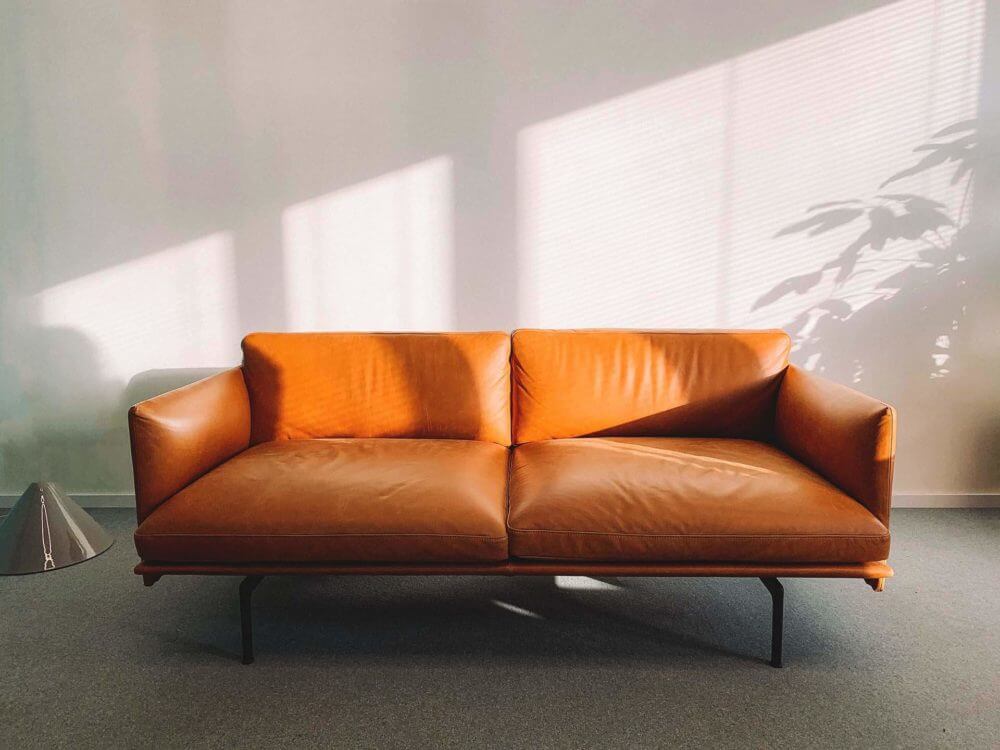
When relocating sofas, thoughtful preparation is crucial. Protect delicate materials like leather with breathable covers. Disassembling can aid in navigating tight spaces. Professionals offer expertise for secure transportation. Shield against scratches with padding, and avoid using the sofas to pack other items. Prioritize floor protection using sliders or mats. Address door-fit challenges wisely. Clean before and after the relocation, and consider costs when hiring professionals.
Preliminary Preparations
Before embarking on the task of figuring out how to pack a sofa, it’s essential to lay the groundwork for a successful and stress-free relocation. Begin by creating a relocation checklist of all the different materials you’ll need, such as relocation blankets, plastic wrap, bubble wrap, tape, and furniture sliders. Clear the surrounding area to ensure unobstructed access to the couch, and enlist the help of a friend or family member for assistance. Having a well-thought-out plan and all necessary supplies at hand will set the stage for a smooth packing process.
Measuring the Sofa Dimensions
Accurate measurements are key to ensuring that your couch can be safely maneuvered through doorways, hallways, and tight spaces during the relocation process. With a measuring tape, record the height, width, and length of the sofa. Jot down these dimensions and keep them handy while planning the relocation route and disassembling the sofas if necessary. Having precise measurements will guide your decisions on whether the couch needs to be disassembled and which pathways are most suitable for its transportation.
Assessing the Moving Path and Doorways
Navigating doorways, staircases, and hallways can be a challenging aspect of relocating large items. Take the time to assess the path the sofas will take from their current location to the relocation truck. Measure doorways, hallways, and any tight corners to ensure that the sofas can fit through comfortably. If there are narrow passages, consider removing doors temporarily and padding sharp corners to prevent any damage or other relocation mistakes.
Removing Cushions and Detachable Parts
As you prepare for the relocation, it’s crucial to disassemble any detachable parts to ensure a safer relocation and more compact transport. Begin by removing the cushions, seat covers, and any loose pillows. Store these items separately and label them for easy reassembly later. If the couch has detachable legs, carefully unscrew them to reduce its overall size. Remember to keep all screws and small parts in a labeled bag to prevent them from getting lost.
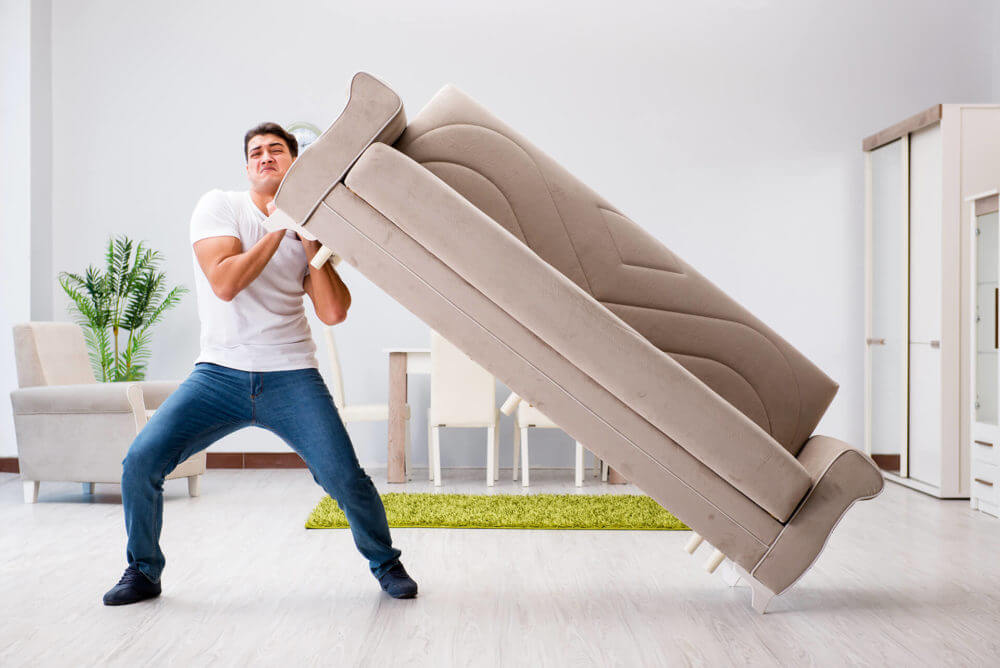
Materials and Tools Needed for Packing a Sofa
Equipping yourself with the right packaging materials and tools is essential to ensure the safety and proper packing of your furniture. Gather relocation blankets, plastic wrap, bubble wrap, tape, furniture sliders, a measuring tape, a screwdriver (if disassembly is needed), and a marker for labeling. Having these essential items on hand will streamline the packing process and help safeguard sofas during transportation.
Selecting Appropriate Wrapping Materials
When packing sofas, selecting the right wrapping materials is crucial to prevent scratches, tears, and other potential damages. Start with relocation blankets or thick blankets to provide a protective layer. These blankets not only shield the sofa’s upholstery but also act as a cushion against impacts. Combine this with layers of bubble wrap or foam padding for added protection, paying particular attention to the corners and delicate areas. The choice of wrapping materials significantly impacts how well sofas withstand the journey to a new home.
Choosing Protective Covers and Padding
Protective covers and padding are the couch’s first line of defense against dirt, moisture, and potential scuffs. Use plastic wrap to create a barrier between the couch and the outer environment, preventing any dust or moisture from seeping in. Additionally, employing padding materials like foam or bubble wrap around vulnerable areas, such as arms and corners, ensures that the furniture remains in pristine condition throughout the relocation.
Gathering Necessary Tools for Dismantling (If Required)
If a couch is modular or has detachable parts, having the necessary tools for dismantling is paramount. A screwdriver (electric or manual) is often the primary tool required to remove legs and other components. Ensure that you have the right size and type of screwdriver for the job to avoid damaging screws or other hardware. Keep a labeled bag handy to store all the screws and parts you remove during disassembly.
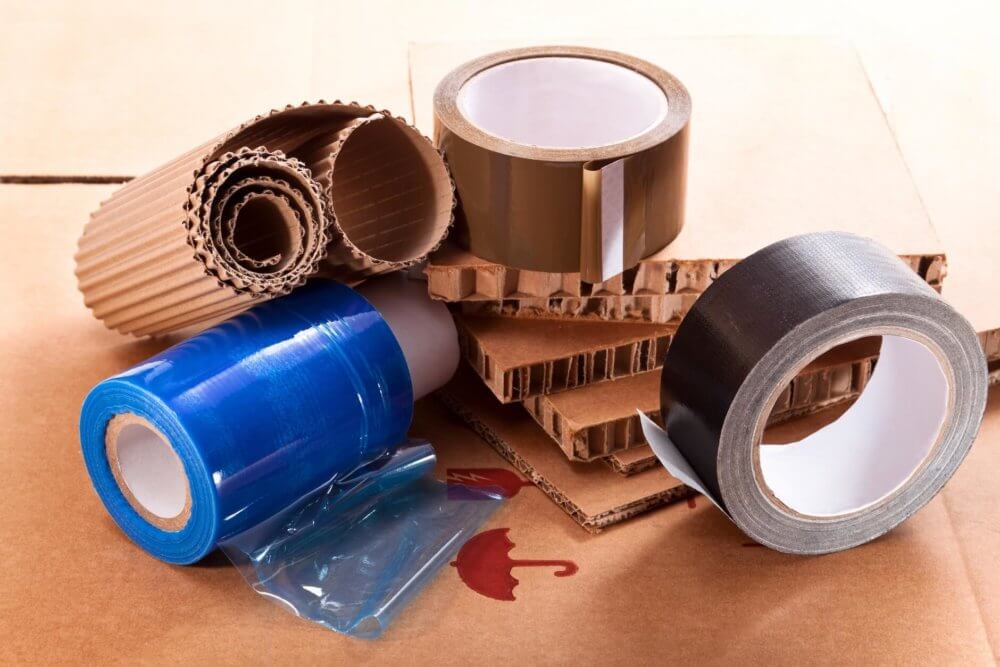
Step-By-Step Guide to Wrapping the Sofa
Properly wrapping sofas is a critical step in ensuring their safety and protection during the relocation process. Follow this step-by-step guide to expertly wrap sofas for a smooth and efficient move.
Cleaning the Sofa Before Packing
Before you begin wrapping sofas, it’s essential to give them a thorough cleaning before the move. Use a vacuum cleaner with an upholstery attachment to remove any dirt, dust, and debris from the surface and crevices. This not only prevents the transfer of dirt to the wrapping materials but also ensures that sofas arrive at their destination in a clean and presentable state.
Carefully Wrapping With Plastic or Furniture Covers
Start the wrapping process by covering the entire couch with plastic wrap or furniture covers. Begin at one end and work your way to the other, making sure to keep the wrap taut but not so tight that it compresses the cushions or frame. The plastic wrap acts as a barrier against moisture and dust, maintaining the cleanliness and integrity of couch. Ensure that the entire surface is adequately covered, including the arms, back, and cushions.
Securing With Tape and Padding Sharp or Fragile Areas
Once the couch is covered in plastic wrap, secure the wrap in place using tape. Be careful not to tape directly onto the fabric or upholstery, as the adhesive could cause damage. Instead, tape along the edges and seams of the plastic wrap to keep it in position. As you proceed, focus on padding any sharp or fragile areas, such as corners and exposed legs. Wrap these areas with additional layers of bubble wrap or foam padding to provide extra protection against bumps and impacts.

Special Considerations for Leather or Delicate Fabric Sofas
When dealing with leather or delicate fabric sofas, extra precautions are necessary to preserve their beauty and condition during a relocation. Leather can be susceptible to scratches and moisture damage, while delicate fabrics may easily tear or become discolored. To safeguard these valuable pieces, consider using soft, non-abrasive cloths or microfiber blankets as the first layer of protection.
When it comes to how to pack a leather sofa for moving – avoid using plastic wrap directly on leather, as it can trap moisture and cause damage. Instead, opt for breathable materials that allow air circulation. Additionally, if you have a delicate fabric couch, consider consulting the manufacturer’s recommendations or seeking professional advice on the best wrapping and handling methods.
Handling Materials That Require Extra Care
Sofas made from materials like silk, satin, or other delicate fabrics demand special attention during the relocation process. Before wrapping, ensure that the couch is clean and free from any stains, as these can become set during transit. Wrap the sofas in acid-free tissue paper before using soft blankets or bubble wrap to add an additional layer of protection.
Be cautious with the amount of pressure applied when wrapping or padding, as delicate fabrics can easily crease or warp. Proper handling and the use of gentle materials will go a long way in preserving the appearance and quality of precious sofas.
Auto-Transport
If your first concern is having your vehicle transported safely and efficiently, enclose shipping is the way to go.
Read moreStorage Service
Knowing what kind of surprises cross country move may hold, we offer 30 day free storage for belongings at the origin state.
Read moreMoving Insurance
Flat Price Moving and Auto Transport Company offers moving insurance to cover potential damages
Read moreClimate Control Considerations During Transport
Climate control is especially important when relocating leather or delicate fabric sofas, as extreme temperatures and humidity levels can cause irreversible damage to fragile items. If you’re relocating during hot or cold weather, aim to maintain a consistent temperature inside the relocation truck or storage facility. Avoid exposing the sofas to direct sunlight or placing them near vents that could introduce excess moisture.
Considering Professional Packing Services
If the thought of packing and transporting valuable leather or delicate fabric sofas is overwhelming, consider enlisting the help of professional packing services. These experts have the experience and knowledge to handle fragile materials with the utmost care.
A reliable moving and car shipping company can provide custom packaging solutions tailored to your specific needs, ensuring that all furniture pieces arrive at a new home in optimal condition. While it might entail an additional cost, the peace of mind and the preservation of cherished furniture could make it a worthwhile investment.
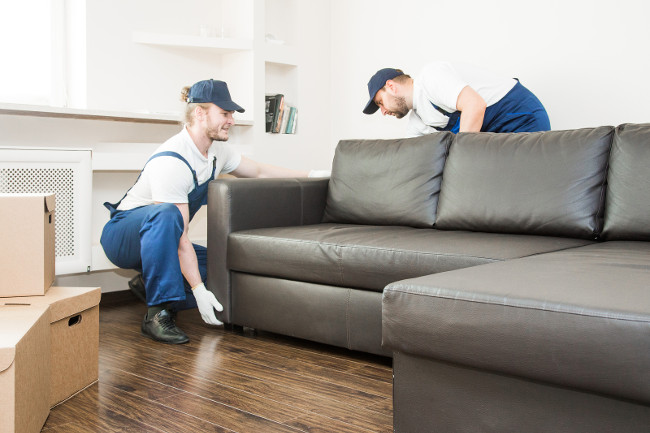
Loading and Transporting the Sofa
Loading and transporting sofas safely and securely is the final crucial step in ensuring a successful move. By employing proper lifting techniques, strategic positioning, and effective securing methods, you can minimize the risk of damage and discomfort during transit.
Techniques for Safely Lifting and Carrying
When lifting and carrying sofas, it’s essential to prioritize the safety of yourself and that of helpers. Bend the knees and use leg muscles rather than back to lift the couch. Keep the back straight and hold the couch close to your body to maintain balance.
If sofas are particularly heavy or bulky, consider using furniture sliders or relocation straps to make the lifting process easier. When navigating stairs or tight spaces, communicate with the helpers to ensure a coordinated and steady movement. Taking time and using proper lifting techniques will reduce the likelihood of injuries and accidents.
Positioning the Sofa in the Moving Truck
When it comes to how to pack a sofa in a moving truck, proper positioning is essential to prevent shifting and damage during transport. Place the couch vertically along one side of the truck’s interior, ensuring that it’s secured against the wall using straps or bungee cords.
Alternatively, you can position the couch horizontally on top of other items, taking care not to stack heavy objects on top of it. Create a stable base by placing heavy boxes or furniture at the bottom of the truck, with the couch positioned securely on top. This arrangement will help distribute the weight evenly and reduce the risk of the sliding or tipping during transit.
Securing the Sofa to Prevent Movement During Transport
To prevent the couch from shifting during transport, use sturdy straps or ropes to secure it to anchor points within the truck. Fasten the straps tightly but not so much that it compresses the couch excessively.
Ensure that the straps are positioned in a way that restricts movement while still allowing for adequate air circulation. Padding the areas where the straps come into contact with the couch can prevent any abrasion or pressure points. By effectively securing the sofas, you’ll minimize the chances of them getting damaged while the truck is in motion.
Unpacking and Setting up the Sofa at the New Location
The final leg of the couch-relocating journey involves unpacking and setting up the couch in its new home. This stage requires careful attention to detail.
Carefully Removing Wrapping Materials
As you begin the unpacking process, exercise caution when removing the wrapping materials. Carefully cut through the tape and plastic wrap, making sure not to nick the fabric or upholstery underneath. Slowly peel away the layers of protective materials, taking time to avoid any sudden movements that could cause damage. If you used blankets, bubble wrap, or other padding, gently remove them while ensuring that no adhesive residue is left behind.
Inspecting for Damages and Reporting if Necessary
Before fully unveiling sofas, inspect them thoroughly for any signs of damage that may have occurred during transport. Look for tears, scratches, or dents on the fabric, frame, and legs. If you notice any issues, take clear photographs and document the damages.
If you hire professional movers, notify them of the damages as soon as possible and follow their procedures for filing a claim. Promptly reporting any damages will help ensure that you receive the appropriate compensation for any repairs or replacements that may be needed.
Reassembling and Positioning the Sofa
If your couch was disassembled before the move, it’s time to reassemble it. Retrieve the screws and parts you set aside, and carefully follow the manufacturer’s instructions for reattaching legs or other detachable components. Once the couch is fully assembled, position it in the desired spot within the room. Consider factors such as natural light, traffic flow, and room layout when choosing the perfect location.

Long-Distance Moving Company Can Make the Relocation Easy and Stress-Free
A relocation and auto transport company can significantly alleviate the challenges and relocation stress. These specialized companies possess the expertise, resources, and experience necessary to handle the complexities of long-haul moves with efficiency and care. From meticulous packing and secure transportation to navigating interstate regulations and providing timely updates, long-distance moving services can streamline the entire process.
Their well-trained long-distance movers ensure that delicate items are properly cushioned, furniture is safely disassembled and reassembled, and your belongings are tracked every step of the way. By entrusting the move to professional cross-country movers, you can enjoy peace of mind knowing that your possessions are in capable hands, allowing you to focus on the excitement of the new adventure rather than the logistics of the journey.
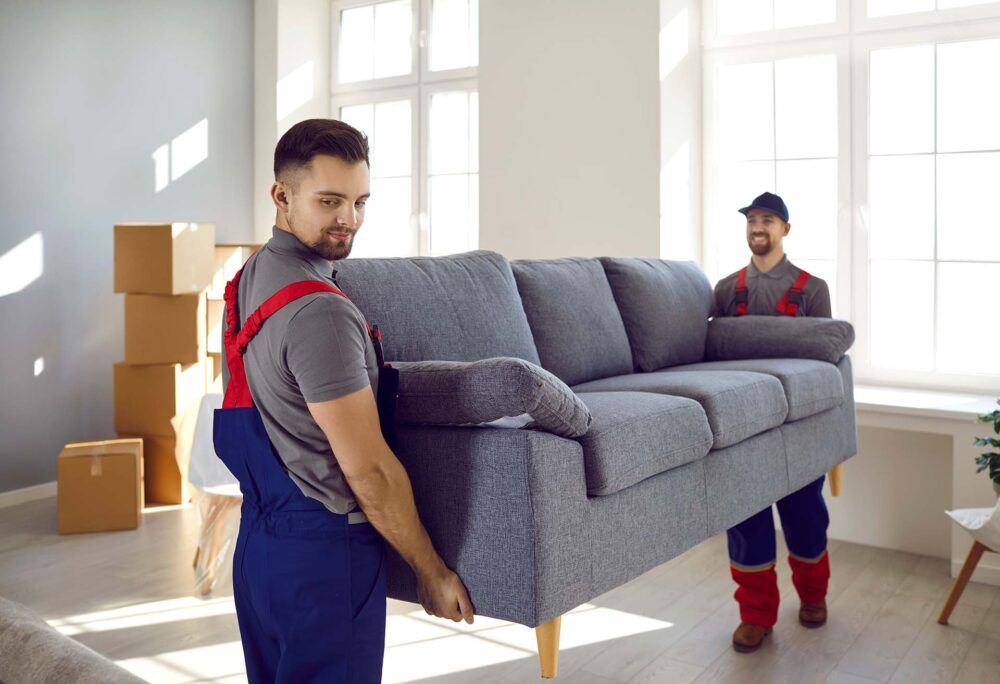
A Seamless Transition for the Sofa and the Move
Mastering the art of relocating sofas involves careful planning, the right materials, and a keen eye for detail. By following the steps outlined in this guide, you can ensure that your couch makes the relocation journey with comfort and safety intact. Consider hiring a relocation company to take care of all the heavy lifting – contact us at Flat Price Auto Transport and Moving and rely on our expert team of movers to safely transport your belongings.
FAQS
Can I Move the Sofa Without Disassembling It?
Relocating a couch without disassembling it largely depends on its size and the dimensions of doorways and hallways in both old and new spaces. If it can fit through without causing damage or risking injury, you might not need to disassemble it. However, disassembling can make moving easier and protect the couch.
How Do I Pack a Reclining Sofa or Sofa Bed?
Start by securing any movable parts with their built-in mechanisms. Remove cushions, wrap delicate areas, and pad corners. Use straps to hold it in a closed position, preventing unwanted movement during transit.
What’s the Best Material to Wrap a Leather Sofa?
When wrapping leather sofas, it’s best to avoid direct plastic wrap, as it can trap moisture. Opt for soft, breathable materials like blankets, microfiber cloths, or specialized furniture covers to safeguard the leather’s quality.
Should I Hire Professionals to Pack My Sofa?
Hiring professionals can be a wise choice, especially for valuable or delicate sofas. They have the expertise and equipment to ensure safe packing and transportation, saving you time and potential headaches.
How Do I Protect the Sofa From Scratches and Tears?
Use relocation blankets, bubble wrap, and foam padding to protect furniture from scratches and tears. Focus on vulnerable areas like corners, arms, and exposed legs.
Can I Use the Sofa to Pack Other Items Inside the Truck?
It’s not recommended. This can lead to shifting and damage. Instead, use designated relocation boxes and containers for packing belongings. You can get free boxes on sites like Craigslist.
How Do I Protect the Floor While Moving the Sofa?
To protect floors, use furniture sliders or mats. These tools minimize friction and prevent scratches on hardwood or tiled surfaces.
What if My Sofa Doesn’t Fit Through the Door?
If a couch doesn’t fit through a door, explore options like removing the door temporarily or disassembling it if possible. In some cases, you might need to consider hoisting through windows or seeking professional assistance.
